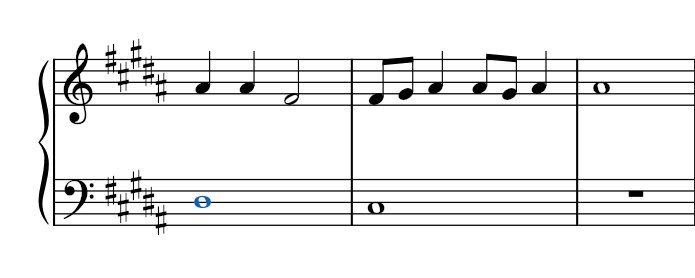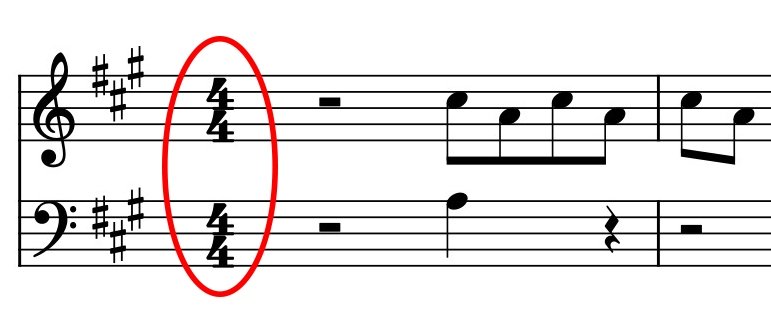Piano Sheet for Beginners Tutorial Series
Tired of feeling lost when looking at sheet music and wishing you could just play?
Want to play your favorite songs without struggling with complex music theories for months?
Welcome to our piano sheet tutorial series for beginners!
You can learn to read music quickly and easily in a few easy steps with this tutorial series. We’ll focus on the essential skills you need to play your favorite songs and understand music on a deeper level.
By the end of this series, you will have the foundation you need to play any song you want. You will not become an expert overnight, but you will have a clear understanding of how music works.
In just a few lessons, you’ll learn:
The basics of melody, rhythm, and harmony: Understand the building blocks of music without being overwhelmed.
Read notes on the staff: Learn treble and bass clefs, sharps, flats, and more, explained in plain English.
Play simple rhythms: Master common time signatures and note values, from whole notes to eighth notes.
Build chords: Discover major and minor chords and learn how to change them with a single finger move.
Play actual songs: Combine your newfound skills to play real music, not just exercises.
These steps cover the three basic elements of reading music: melody, rhythm, and harmony.
- Melody is the tune of a song.
- Rhythm is the pulse or the beat of a song.
- Harmony is playing two or more notes at the same time.
You will also learn about different types of notes, clefs, staffs, sharps, flats, chords, and more.
Let me break down the steps for you that will be covered in this piano tutorial series.
Part One: Melody
Part Two: Rhythm
Part Three: Harmony
Part Four: Chords and Beyond
Melody
Melody, also called the tune of a song, is the heart and soul of music. We’ll unlock the mysteries of notes, staffs, and even those tricky sharps and flats, all explained in a way that makes sense.
In this part on melody, you’ll learn about the staff, treble clef, bass clef, and how the notes are written on the satff lines. Don’t worry if these terms sound complicated; I’ll simplify them for you.
The following image is a part of sheet music showing all the parts that we will cover in the melody section, such as staff, grand staff, treble and bass clef, note values, pitch and intervals, scales, etc.

Learn the secrets of melody
- The Staff: This is the foundation of written music, consisting of five horizontal lines and four spaces where notes reside.
- Treble and Bass Clefs: These symbols define the pitch range of notes on the staff. Treble clef (looks like a fancy G) is for higher-pitched instruments like violins and flutes, while bass clef (looks like a backwards F) is for lower-pitched instruments like cellos and pianos.
- Note Values: These determine the length of a note. Whole notes (ovals) last the longest, followed by half notes, quarter notes, eighth notes, sixteenth notes, and so on.
- Pitch and Intervals: Pitch refers to the highness or lowness of a sound, while intervals measure the distance between two pitches. Common intervals include octaves (C to the next C), fifths (C to G), and thirds (C to E).
- Scales: These are ordered sets of notes within a specific key. Major scales have a cheerful sound, while minor scales sound more somber. Learning basic scales like C major and A minor will help you understand melodies better.
Rhythm
Discover the pulse of music through rhythm, including time signatures and different note lengths. You’ll be tapping your foot to the rhythm in no time.
We’ll explore time signatures like 3/4 and 4/4, as well as measures. You’ll become familiar with whole notes, half notes, quarter notes, etc., along with rests. Trust me, it’s simpler than it sounds.
This image from sheet music shows the rhythm part of a song. As shown in the image, in the rhythm part, we will discuss time signatures, note values, beats, tempo, meter, and rhythmic pattern.

Rhythm: Master the beat!
- Beats and tempo: Beats are the underlying pulse of music, and tempo refers to the speed of those beats. Understanding basic time signatures like 4/4 (four beats per measure) and 3/4 (three beats per measure) is crucial.
- Rhythm notation: Learn how different symbols like quarter notes, eighth notes, and rests represent different lengths of sound and silence in music.
- Meter: This refers to the organization of beats into groups, creating a sense of rhythmic drive. Common meters include the simple meter (two or three beats per group) and the compound meter (six beats per group).
- Rhythmic patterns: Explore how different combinations of notes and rests create interesting and engaging rhythms. Learn to identify and play basic patterns like syncopation (accents on off-beats) and polyrhythms (combining two or more independent rhythms).
Harmony
Now, let’s dive into harmony—playing two or more notes simultaneously, where two notes become something more. We’ll learn about chords, those magical combinations that create the rich sounds of music.
Explore the world of harmony
- Chords: These are combinations of two or more notes played simultaneously. Common chords include triads (three notes) like C major (C-E-G) and A minor (A-C-E).
- Chord progressions: These are sequences of chords that create a sense of movement and direction in music. Understanding basic progressions like I-V-vi-IV (C-G-Am-F) will unlock a lot of popular music.
- Cadences: These are musical punctuation marks that signal the end of a phrase or section. Perfect cadences (major or minor chord then the tonic chord) and dominant-tonic cadences (V-I progression) are examples of common cadences.
- Harmony in different genres: Explore how harmony is used differently in various musical styles, like the emphasis on dominant-tonic cadences in blues or the complex chord structures in jazz.
4. Chords and Beyond
Unravel the secrets of chords, from major to minor and everything in between. In this final step, we’ll quickly go over major chords, changing them to minor or augmented chords with simple moves. You’ll learn how to change them up and create your own unique sounds, all with just a few simple steps.
So, are you ready to unlock the magic of music? Dive into this tutorial series and start playing your favorite songs today!
Melody, Harmony and Rhythm
Here’s a breakdown of topics under the main headings of melody, harmony, and rhythm:
Melody:
- Introduction to Melody
- Pitch and Note Names
- Treble Clef Notes
- Bass Clef Notes
- Ledger Lines
- Grand Staff (Combining Treble and Bass Staves)
- Sharps and Flats
- Order of Sharps and Flats
- Key Signatures
- Scale Basics
- Whole Steps and Half Steps
- Intervals
- Basic Melodic Patterns
- Sight-Reading Melodies
Rhythm:
- Introduction to Rhythm
- Understanding Time Signatures
- Common Time Signatures (e.g., 4/4, 3/4)
- Note Durations (Whole, Half, Quarter, Eighth, and Sixteenth)
- Rests
- Dots and Ties
- Basic Rhythmic Patterns
- Syncopation
- Tempo and Metronome
- Simple and Compound Meters
- Reading Rhythmic Notation
- Creating Rhythmic Variations
- Applying Rhythm to Melodies and Chords
Harmony:
- Introduction to Harmony
- Playing Notes Together (Unison)
- Introducing Intervals
- Chords (Triads)
- Major and Minor Chords
- Inversions of Chords
- Seventh Chords
- Basic Chord Progressions
- Understanding Harmony in Sheet Music
- Accompaniment Patterns
- Playing Chords in Different Inversions
- Adding Harmony to Melodies